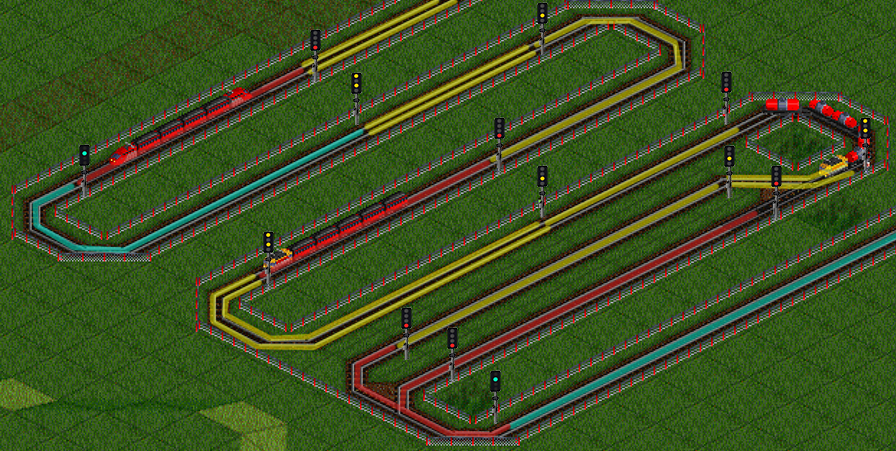
This creates a sort of dependency tree, where first entered trains may have to wait for later trains to exit the intersection before continuing. Voxel Tycoon trains, on the other hand, can and will enter blocks that other trains may have already looked at when deciding whether to pass a chain signal. In addition, trains in Factorio also reserve all chain blocks they plan to traverse through in a sequence of chain blocks, up to and including the next normal block. In Voxel Tycoon, momentum takes second priority trains will stop immediately if the block they were approaching gets taken. In Factorio, trains reserve blocks ahead of them so that if their momentum carries them into another block, that block is guaranteed to be free. In particular, the way two-way tracks are designated is exactly the same. The chain and block signals in Voxel Tycoon are almost exactly the same as the chain and rail signals in Factorio. This way, the pre-signal grouping cannot be blocked forever as long as there is enough space after the exiting regular signals to fit each train.Ĭomparison with other games Factorio If this train needed to pass a pre-signal to enter the offending block, then it must be able to leave the block, thus freeing the original train. Trains can pass an initial pre-signal, only to be blocked at another pre-signal by another train. when it wants to go to a station in the middle), but there is no eventual exit after the train's path, the train will not go through. If a train does not need to pass completely through a sequence of pre-signals (i.e. The pre-signal will be green if all possible paths are free, yellow if there is at least one blocked and at least one open, and red if all paths are blocked.

OPENTTD PATH SIGNALS FREE
This is usually used for keeping intersections free and distributing trains among platforms. The bottom train will be able to pass through the intersection with the help of the pre-signal on the right track.Ī train will pass a pre-signal if every block in the train's desired path up to and including the next regular signal is free. This can be used to construct balancers and other helpful constructs.Pre-signal keeping an intersection clear. For instance, entry/exit signals will cause trains to take longer routes if a path is blocked, while path signals may wait. Path signals also can behave similar to entry/exit signals, although entry/exit signals have uses that path can't fully achieve. I use path signals for forks that have 4 or more tracks, as this is where they start to benefit. This is a major advantage against standard OpenTTD signals, where you had to place signals before and after junctions, which caused trains to block junctions while waiting.įor straight track and basic merges/splits, I stick to normal one-way signals.

It is not safe for a a train to wait at a signal immediately after a junction before the whole train has cleared the junction, as it would be blocking the junction while waiting, as illustrated in the example below. This is because it is only safe for a train to wait in front of a junction.

The back of a Path signal is not considered a safe waiting position, and therefore paths are reserved through these signals.īecause the front of every signal is defined as a safe waiting position, you would normally not want to place a signal immediately behind a junction, only in front of a junction. Safe waiting positions are - by definition - in front of signals, depots and track ends. The Path signals are red by default, and will only show green as soon as a train can reserve a path to the next safe waiting position on its route. The two new signal types behave a bit differently than standard OpenTTD signal types. This allows 2 trains to be on the same signal block at the same time, so long as they have paths that don't cross. One-way path signals reserve an individual path between it and the next signal. One-way signals reserve a signal block between it and the next signal.


 0 kommentar(er)
0 kommentar(er)
